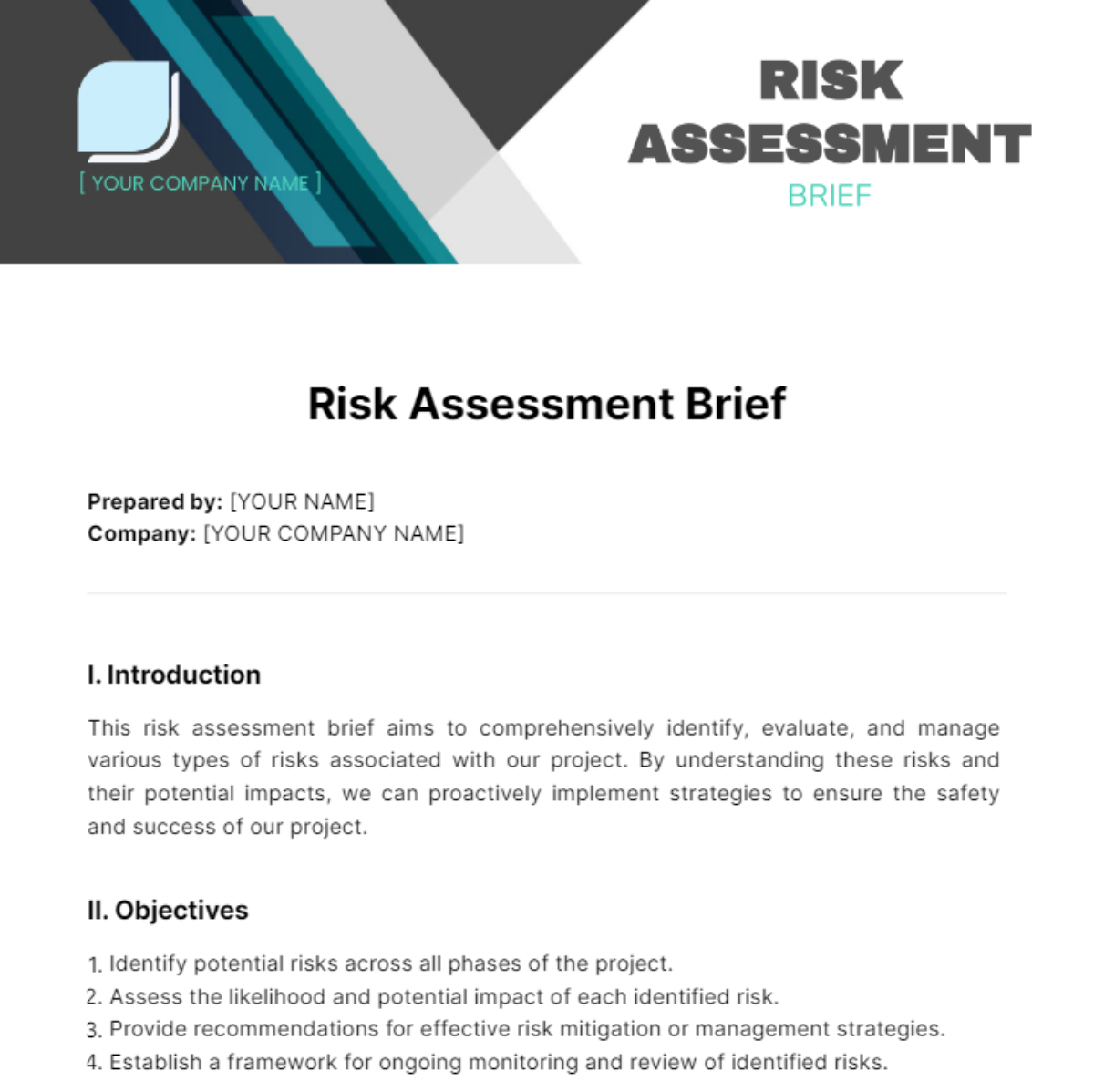Free Risk Assessment Brief

Prepared by: [YOUR NAME]
Company: [YOUR COMPANY NAME]
I. Introduction
This risk assessment brief aims to comprehensively identify, evaluate, and manage various types of risks associated with our project. By understanding these risks and their potential impacts, we can proactively implement strategies to ensure the safety and success of our project.
II. Objectives
Identify potential risks across all phases of the project.
Assess the likelihood and potential impact of each identified risk.
Provide recommendations for effective risk mitigation or management strategies.
Establish a framework for ongoing monitoring and review of identified risks.
III. Risk Identification
Risk Category | Potential Risks |
|---|---|
Health and Safety | Accidents, injuries, exposure to hazardous materials |
Environmental | Pollution, waste management, ecological impact |
Project Delays | Unforeseen circumstances, resource constraints, external factors |
Financial | Budget overruns, currency fluctuations, funding shortages |
Stakeholder | Conflicts of interest, communication breakdowns, stakeholder resistance |
Regulatory | Non-compliance with local, national, or international regulations |
IV. Risk Assessment
Each identified risk has been assessed based on its likelihood and potential impact on the project. Likelihood and impact ratings have been assigned on a scale of 1 to 5, with 1 indicating low likelihood/impact and 5 indicating high likelihood/impact.
V. Risk Evaluation
Using a risk matrix, high-priority risks have been identified based on their likelihood and impact ratings. These risks require immediate attention and proactive mitigation strategies to minimize their impact on the project.
VI. Risk Mitigation or Management Strategies
Health and Safety Risks |
|
Environmental Risks |
|
Project Delays |
|
Financial Risks |
|
Stakeholder Risks |
|
Regulatory Risks |
|
VII. Monitoring and Review
Regular monitoring and review of identified risks will be conducted throughout the project lifecycle. Quarterly risk assessment meetings will be held to assess the effectiveness of mitigation strategies and address any emerging risks promptly.
VIII. Appendices
Risk Register: Detailed documentation of all identified risks, including their likelihood, impact, and mitigation strategies.
Environmental Management Plan: Comprehensive guidelines for managing environmental risks associated with the project.
Contingency Plan: Protocols and procedures to be followed in the event of project delays or unforeseen circumstances.
- 100% Customizable, free editor
- Access 1 Million+ Templates, photo’s & graphics
- Download or share as a template
- Click and replace photos, graphics, text, backgrounds
- Resize, crop, AI write & more
- Access advanced editor
Mitigate uncertainties effectively with Template.net's Risk Assessment Brief Template. Tailored for flexibility, this editable tool allows seamless customization to fit diverse risk profiles. Utilize our Ai Editor Tool to adapt the template to your specific requirements swiftly. Safeguard your ventures with comprehensive risk evaluations, ensuring informed decision-making and fortified resilience against unforeseen challenges





























